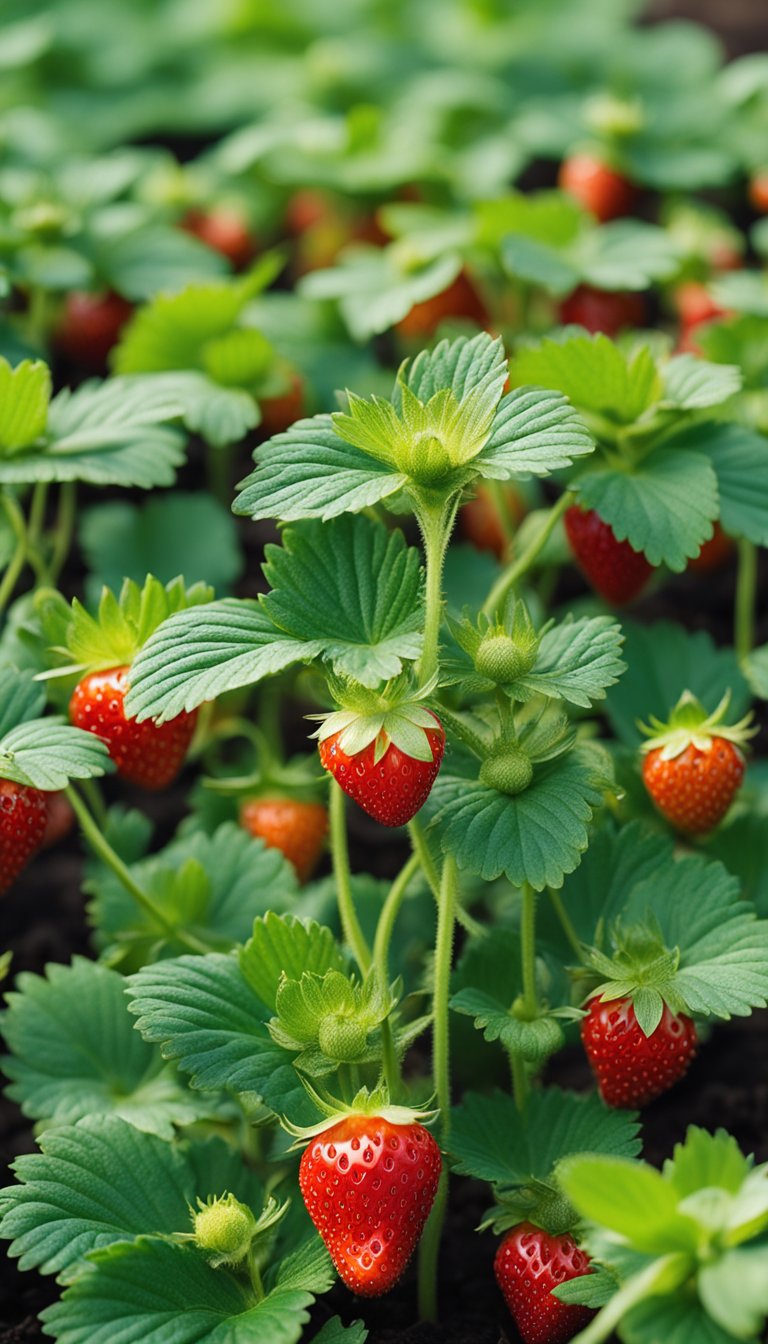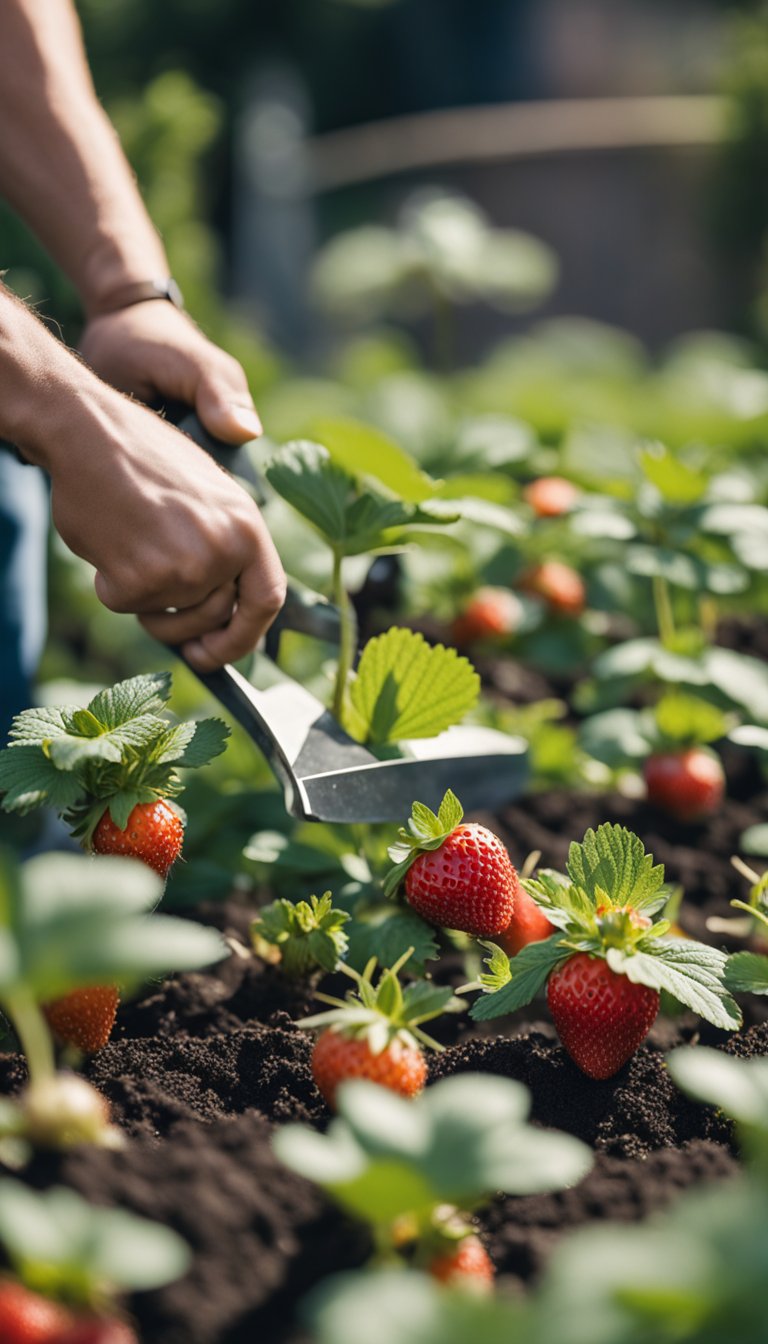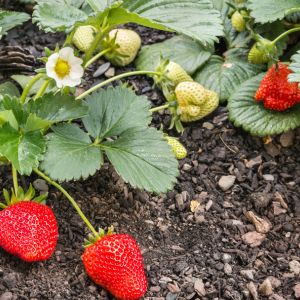Are you looking to propagate your strawberry plants? One common method is to cut runners from the mother plant and replant them elsewhere in your garden.
This post may contain affiliate links.
But when is the best time to do this? In this article, we’ll explore when to cut strawberry runners from the mother plant to ensure the best chance for successful propagation.
First, let’s review what strawberry runners are. Runners are long, thin stems that grow out from the mother plant and produce new plantlets at the end.
These plantlets can be rooted and grown into new strawberry plants. However, if left to grow unchecked, runners can drain energy from the mother plant and reduce fruit production. That’s why it’s important to know when to cut them.
So, when should you cut strawberry runners from the mother plant? The best time is typically in late summer or early fall, after the plant has finished fruiting for the season.
This allows the plant to focus its energy on producing new runners and developing a strong root system for the new plantlets. By following this timeline, you can ensure the best chance for successful propagation and a bountiful strawberry harvest in the years to come.
Related Article: Pruning Raspberries in the Spring: A Step by Step Guide
Understanding Strawberry Runners
If you’re growing strawberries, you may have heard of runners or stolons. These are long, thin stems that grow out from the mother plant and develop into new plants.
Understanding the role of runners in strawberry growth and the different types of strawberry plants can help you decide when to cut them.
The Role of Runners in Strawberry Growth
Runners are a way for the mother plant to reproduce and create new daughter plants. As the runner grows, it develops its own roots and eventually becomes a new plant. This process allows the strawberry plant to spread and produce more fruit.
Related Article: The Ultimate Guide to Transplanting Rhubarb
However, runners also require energy from the mother plant to grow. If too many runners develop, it can take away from the energy the mother plant needs to produce fruit. This is why it’s important to know when to cut runners.

Types of Strawberry Plants
There are two main types of strawberry plants: June-bearing and everbearing. June-bearing plants produce fruit once a year in late spring or early summer. Everbearing plants produce fruit twice a year, once in early summer and again in early fall.
When it comes to runners, June-bearing plants tend to produce more runners than everbearing plants. This is because June-bearing plants need to spread out and create new daughter plants to ensure a good crop the following year.
Everbearing plants, on the other hand, don’t need to spread out as much since they produce fruit twice a year.
Knowing the type of strawberry plant you have can help you decide when to cut runners. For June-bearing plants, it’s best to cut runners after the main crop has been harvested.
This allows the mother plant to focus on producing new fruit buds for the following year. For everbearing plants, it’s best to cut runners throughout the growing season to prevent them from taking away too much energy from the mother plant.
By understanding the role of runners in strawberry growth and the different types of strawberry plants, you can make informed decisions on when to cut runners to ensure a healthy and fruitful strawberry patch.
Related Article: Growing Blackberries in Pots: Tips and Tricks

Optimal Conditions for Healthy Runners
When it comes to growing strawberries, healthy runners are essential for a bountiful harvest. Here are a few things to keep in mind to ensure your strawberry runners are as healthy as possible.
Soil and Water Requirements
Strawberries prefer well-draining soil that is rich in organic matter. Make sure the soil is moist but not waterlogged. Overwatering can lead to root rot and other issues.
If you’re growing strawberries in a container, make sure it has drainage holes to prevent water from accumulating at the bottom.
Sunlight and Space Considerations
Strawberries need full sun to thrive, so make sure they are planted in an area that receives at least 6 hours of direct sunlight per day. They also need enough space to grow and spread out.
If you’re planting in a garden, make sure to space the plants at least 12-18 inches apart. If you’re growing in a container, choose a pot that is at least 12 inches wide and deep enough to accommodate the plant’s root system.
The Best Time to Cut Strawberry Runners
If you’re growing strawberries, you might be wondering when to cut the runners from the mother plant. Here’s what you need to know.
Related Article: How to Transplant Raspberries: A Step-by-Step Guide
Seasonal Timing for Runner Removal
The best time to cut strawberry runners is during the late summer or early fall. This is because the growing season is coming to an end, and the plant is starting to prepare for winter.
By cutting the runners during this time, you’ll be helping the plant focus its energy on producing fruit rather than producing new plants.
Growth Phases and Runner Cutting
It’s also important to consider the growth phase of the plant when deciding when to cut the runners. Strawberry plants go through three main phases: vegetative, flowering, and fruiting.
During the vegetative phase, the plant is focused on producing leaves and runners. During the flowering phase, the plant is focused on producing flowers and setting fruit. And during the fruiting phase, the plant is focused on ripening its fruit.
The best time to cut runners is during the vegetative phase, as this is when the plant is most actively producing runners. If you wait until the flowering or fruiting phase, the plant will be less likely to produce runners, and the runners that do grow may not be as strong or healthy.
How to Cut Strawberry Runners
If you want to grow healthy and productive strawberry plants, it’s important to know how to cut their runners properly. Here’s a guide on how to do it right.
Proper Technique and Tools
To cut strawberry runners, you’ll need a pair of sharp pruning shears or scissors. It’s important to use sharp tools to avoid damaging the mother plant and the new plantlets.
Start by identifying the runner you want to cut. Look for a runner that has developed a few leaves and a small root system. Using your sharp pruning shears or scissors, cut the runner as close to the mother plant as possible. Be careful not to damage the mother plant or any of its leaves.
Transplanting and Propagating New Plants
Once you’ve cut the runner, you can either transplant it to a new location or propagate it to grow a new plant. To transplant the new plantlet, dig a small hole in the soil and gently place the roots inside. Cover the roots with soil and water the plantlet well.
If you want to propagate the new plantlet, you can root it in water or soil. To root it in water, place the plantlet in a jar of water and change the water every few days. Once the plantlet has developed a strong root system, you can transplant it to soil.
To root the plantlet in soil, fill a small pot with potting soil and make a small hole in the center. Gently place the roots of the plantlet inside the hole and cover with soil. Water the plantlet well and keep it in a warm, sunny location.
Maintaining Plant Health After Cutting Runners
After cutting the runners from your strawberry plants, it’s important to take some additional steps to ensure the plant’s health. Here are some tips to help you maintain your plant’s health after cutting runners.
Post-Cutting Care
After cutting the runners, it’s important to keep the soil around the mother plant moist. This will help the plant recover from the stress of cutting and encourage new growth. You should also remove any dead or yellow leaves from the plant to prevent disease from spreading.
To promote healthy growth, you can fertilize the plant with a balanced fertilizer. However, be careful not to over-fertilize as this can damage the plant. Follow the instructions on the fertilizer package carefully.
Preventing Overcrowding and Disease
One of the main reasons for cutting runners is to prevent overcrowding. However, it’s important to continue monitoring the plant to ensure it doesn’t become overcrowded again.
If you notice the plant starting to produce too many runners, you can cut them back to prevent overcrowding.
Overcrowding can lead to disease as well. When plants are crowded, there is less air circulation, which can lead to the growth of mold and other diseases. To prevent disease, make sure to space your plants out properly and provide good air circulation.
Mulch can also help prevent disease by keeping the soil moist and preventing the growth of weeds, which can harbor pests and disease. Apply a layer of mulch around the base of the plant, being careful not to cover the crown of the plant.
Frequently Asked Questions
How do you properly trim strawberry runners from the parent plant?
When trimming strawberry runners, it’s important to use clean and sharp scissors or pruning shears. Locate the runner where it connects to the mother plant and cut it off about 1 inch away from the base. Be careful not to damage the mother plant or any nearby strawberry plants.
What’s the best season to separate strawberry runners from the mother plant?
The best time to separate strawberry runners from the mother plant is in the late summer or early fall, after the fruiting season has ended. This allows the new plants to establish themselves before the winter frost sets in.
Is it possible to propagate new strawberry plants from cut runners?
Yes, it’s possible to propagate new strawberry plants from cut runners. Simply plant the runners in soil or a pot and water them regularly. In a few weeks, new plants will begin to grow.
When should strawberry runners be cut for optimal growth?
Strawberry runners should be cut as soon as they appear, to prevent them from draining energy from the mother plant. This allows the mother plant to focus its energy on producing larger and healthier strawberries.
What are the consequences of not pruning strawberry runners?
If strawberry runners are not pruned, they can drain energy from the mother plant and reduce the size and quality of the strawberries produced. Additionally, overcrowding can lead to disease and pest problems.
How many runners should I leave attached to each strawberry plant?
It’s recommended to leave no more than 3 runners attached to each strawberry plant, to avoid overcrowding and ensure optimal growth and fruit production.
Follow my gardening board on Pinterest.



